The Story of Culture and Arts
- Image resource of Korean history
- Documents from History TextBooks
- Culture & Art Stories from Korean History
- Culture & Art Stories from Korean History - Korean
- National Institute of Korean History
- History net
- About the site
- Introduce
-
Numerous topics related to Korean culture and art are mentioned in middle and high school national history textbooks, but most of them are briefly described by era, making it difficult to understand their concepts, transition processes, and characteristics.
<Culture & Art Stories from Korean History> produces and provides video materials based on expert commentary on the flow, change process, characteristics and characteristics of each major topic in the field of culture and art in Korean history.

Scenario
What is the first thing you think of when you hear “sea women”, or female divers? Mothers and grandmothers who raise their children with toughness. A fishing villager who, with a simple smile generously, offers you fresh seafood. A fairytale-like scene of someone ducking and diving with dolphins under the sea. But, haven’t we missed something important? It is because the word “Haenyeo” refers to a woman’s profession which involves foraging in the ocean.
The Work of the Haenyeo, Muljil
“Haenyeo” refers to women who free dive underwater for long periods without any breathing equipment to gather seafood. The work a Haenyeo does is called muljil in Korean. Muljil can only be done by experts with many years of experience. Through long experience from repeated dives, they learn the sea’s topography and the sealife’s habitat. Their extensive knowledge of the tides and winds tells them when it’s time to undertake muljil.
Based on their skill level, Haenyeo are divided into ranks: senior, middle, and junior. The exceptionally talented senior Haenyeo can dive to depths over 15 meters and hold their breath for over 2 minutes. Haenyeo make a unique whistle-like sound when they resurface to catch their breath. This sound is called “sumbi sori”. Sumbi sori is a Haenyeo technique for expelling the carbon dioxide built up in their lungs while diving. All Haenyeo must master this.
What kind of tools do Haenyeo use for muljil? For the Haenyeo who work without diving equipment, the ball-shaped tewak is an essential item Haenyeo cannot dive without. That’s because Haenyeo rely on the tewak when they swim to the fishing grounds and resurface to rest. The mangsari, a net used to hold their catch, is attached to the tewak. Haenyeo use different tools depending on what they are catching. They use a short, thick blade for gathering abalone, a short hoe for seaweed and kelp, and a harpoon-shaped tool for spearing fish.
The Haenyeo wear a wetsuit while diving. Before the 1970s, Haenyeo entered the sea wearing an outfit made of cotton. Afterward, when rubber wetsuits were introduced from abroad, Haenyeo began to wear these with flippers. The suit’s insulation allowed them to stay in the water longer, drastically increasing the size of their catches.
The Haenyeo Community
The fertile Jeju fishing grounds of today are all thanks to the efforts of the Haenyeo community to manage marine resources. A Haenyeo community belongs to a village’s fishing community and must manage the village’s fishing grounds well. To control set annual catch quotas and maintain marine populations in each fishing ground, the Haenyeo community limits muljil by prohibiting the capture and gathering of sea produce during spawning seasons. They also perform regular cleanups of ocean ecosystems and clear algae stuck to rocks in littoral zones. This helps the agar and other seaweed to grow better.
In the past, beach fire pits were where Haenyeo changed clothes and warmed their freezing bodies. It was also an important site for learning new tips and tricks about muljil as well as about the Haenyeo duties. After the appearance of modern dressing rooms, these fire pits all but disappeared. But the fire pit culture of respect, consideration, recognition, and support still lives on in the Haenyeo community.
With danger lurking everywhere in the waters, Haenyeo keep an eye on each other and work close to one another. Haenyeo share their catches with those who are unable to fill their mangsari. They also designated special shallow muljil areas called “granny seas” for Haenyeo who are older and unable to dive like they used to.
The History of the Haenyeo
The Haenyeo originate from the island of Jeju. Between the 3rd and 12th centuries, the island was a de facto independent kingdom called Tamna. Tamna actively engaged in foreign diplomacy and trade with neighboring East Asian countries. Tamna was famous for its regional specialty, dried abalone, called “Tamna abalone.” An 8th-century wooden tablet was found at Heijo Palace in Japan that mentions Tamna abalone. This confirms the possibility that Jeju divers have been around for a very long time.
The first official record of Haenyeo can be found in the book Record of the Climate and Soil of Jeju from 1629.
‘The women who gather seaweed are called jamnyeo(diving women). They enter the sea between February and May to gather seaweed.’ - Yi Geon, Record of the Climate and Soil of Jeju, 1629.
Jeju residents from the Joseon period suffered from having to annually offer their regional specialty product to the king as tribute. And seaweed-type plants and abalone were no exception. Men who specialized in catching abalone offered to the royal court were called “pojak”. Many of these men fled the island, unable to endure the grueling work.
‘Not only do the local officials of Jeju offer much abalone to the king, they also line their own pockets. several fold. Thus, the work of the pojak is so arduous, 7 or 8 out of 10 either flee or drown.’ - Kim Sang-heon, Namsarok (Records of Namsa), 1602
In 1629, the prohibition of movement from Jeju to the mainland was enacted, and remained in effect for 200 years.
‘Due to the people of Jeju Island becoming vagabonds and moving to the mainland, the number of laborers in the island’s three counties has decreased. Therefore, his majesty the king has allowed the Border Defense Council to prohibit Jeju islanders from coming to the mainland.’ - Veritable Records of King Injo Vol. 21, Month 8, Day 13, Year 7 of King Injo (1629)
With the sudden decrease in men on the island, the collection of abalone and seaweed tribute fell to the women.
‘About 90 haenyeo were put in charge of the dried abalone for tribute. They were old and ill. Most were unfit for the job. There were 800 haenyeo who gather seaweed. The task of picking abalone was divided among these seaweed gatherers.’ - Yi Ik-tae, Jiyeongnok (Records of Knowledge of Yeongju [Jeju Island]), 1694.
Exportation of Haenyeo
Full-scale exportation of the Jeju Haenyeo began during the Japanese occupation of Korea.
After the signing of the Korea-Japan Trade Agreement in 1883, Japanese divers with modern diving equipment, began the large-scale gathering of abalone along Jeju shores. Japanese seaweed merchants went to Jeju in droves, quickly devastating the Jeju Haenyeo’s fishing grounds.
Beginning in 1895, mainland seaweed merchants also began hiring Jeju Haenyeo and sending them in groups around the Korean Peninsula and beyond. Korea’s east and west coasts, Qingdao and Dalian in China, Vladivostok in Russia, and to 13 locations in Japan. In 1932, nearly 1,800 Jeju Haenyeo were working the Japanese fishing grounds, filling in for the dearth of Japanese female divers.
Epilogue
In the 1960s, there were over 23,000 Haenyeo. But their numbers have steadily declined. As of the end of 2022, only 3,000 remained in Jeju. The preservation of the Haenyeo and muljil tradition is important because Haenyeo culture is closely linked to various other aspects of Jeju’s traditional cultural heritage.
Today, Haenyeo culture is not only about creating a highly trained female worker but also about being a model for both Jeju and Korea at large. This is why we need to take a strong interest in the way of life and traditions of these resilient sea women.
Life & Folklore
17 films-
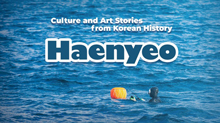 Haenyeo, female divers in Jeju08:52
Haenyeo, female divers in Jeju08:52 -
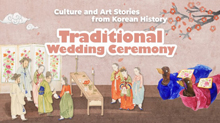 Traditional Wedding Ceremony08:22
Traditional Wedding Ceremony08:22 -
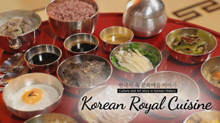 Korean Royal Cuisine08:22
Korean Royal Cuisine08:22 -
 Gat and Traditional Headwear of Korea08:48
Gat and Traditional Headwear of Korea08:48 -
 Managing Epidemics throughout Korean History08:48
Managing Epidemics throughout Korean History08:48 -
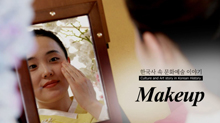 Makeup07:52
Makeup07:52 -
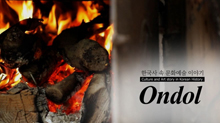 Ondol, Korea's Underfloor Heating System08:40
Ondol, Korea's Underfloor Heating System08:40 -
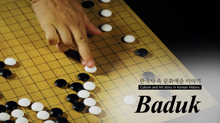 Baduk08:32
Baduk08:32 -
 Four Treasures of the Study09:34
Four Treasures of the Study09:34 -
 Farming Implements09:12
Farming Implements09:12 -
 Coming-of-Age Ceremony08:41
Coming-of-Age Ceremony08:41 -
 Ginseng08:44
Ginseng08:44 -
 Tobacco08:27
Tobacco08:27 -
 Kimchi08:37
Kimchi08:37 -
 Relief Crops08:37
Relief Crops08:37 -
 Korean Currency09:28
Korean Currency09:28 -
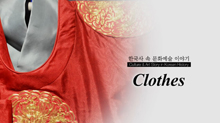 Clothes08:20
Clothes08:20

